Peach season is in full swing, so let's make a gluten-free peach pie!
This post may contain affiliate links. Please see my disclosure page for more information. Thanks!
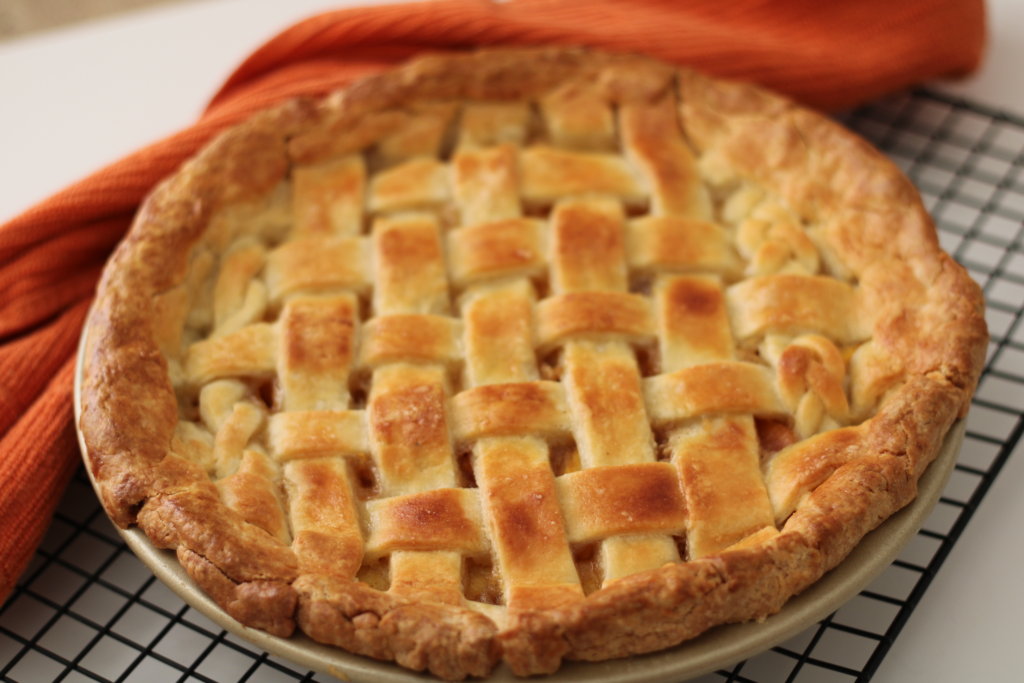
About This Peach Pie Recipe
Our CSA has been giving us lots of fresh peaches this summer. So to use them up in a super delicious way, I decided to modify my gluten-free apple pie recipe for a peach pie instead!
The first thing you should know about making any pie is that it always tastes better when made from scratch. Can you use frozen pie crusts? Of course! But everything tastes better when you bake it yourself - especially when it comes to pies.
And for gluten-free pastry and pie, Cup4Cup is the best flour for the job.
About The Gluten-Free Flour Blend
Cup4Cup has been my go-to for gluten-free baking and pastry since 2014. I recommend it in my gluten-free baking eBook (find it here!), and use it in numerous recipes, including gluten-free empanadas, galettes, chocolate chip cookies, and naan.
If you want a pie dough that rolls out like regular dough, crisps up perfectly and creates an excellent crunch - without falling apart and crumbling to pieces, you need Cup4Cup flour! When combined with cold butter, egg, buttermilk, and sugar, it creates an excellent pastry dough that you can use with ease.
Note: Cup4Cup also offers a gluten-free pie crust mix, but I prefer to make the crust myself with their multipurpose flour. This flour is not dairy-free as it does contain milk powder.
Other Ingredients You Need For Gluten-Free Peach Pie
Kosher Salt: To balance the sweetness of the pie crust and peach mixture.
Cold, Unsalted Butter: We will use a box grater to grate this into smaller pieces, to ensure it gets distributed evenly into the pie crust mixture (so it gets super flaky!). We'll also top the pie with some dollops of butter for extra decadence at the end before baking.
Buttermilk: This is the liquid for the pie crust that will help it form together into a dough.
Egg: This will be used in our pie crust dough and for our eggwash before baking.
Peaches: Yes, we need peaches! You can use whatever kind of peaches you prefer.
Lemon Juice: To prevent the peaches from turning brown.
Brown & Granulated Sugars: These will be added to the peaches for extra sweetness and used to sweeten the pie crust.
Cinnamon & Nutmeg: The perfect spices to compliment the peaches.
Tools for Gluten-Free Baking
Rolling Pin & Pizza Cutter: This helps for both rolling out the pie dough and cutting it into strips for the lattice design. Both of mine are from TJ Maxx!
A ruler or tape measure: To make sure your pie crust will fit your pie pan. Definitely recommend having a tape measure nearby!
Bench scraper: While I shape the dough with my hands, you can also use a bench scraper, like this one. It also comes in handy for other baking recipes, like croissants.
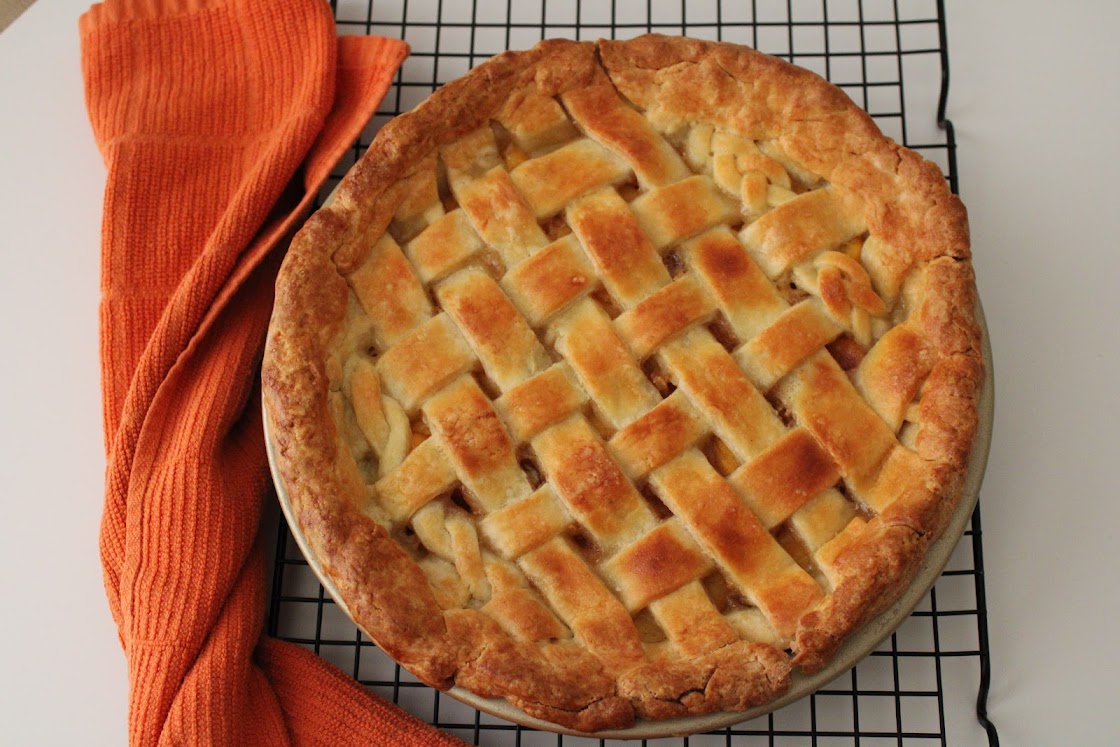
How To Make Gluten-Free Peach Pie
To make this gluten-free peach pie, first you'll make the dough so it has time to refrigerate and firm up. While it's cooling, you will assemble the peach mixture so that the juices from the peaches can meld with the brown sugar, cinnamon, nutmeg, and lemon juice. Finally, you'll roll out the dough, add it to your pie tin, put in the filling, then cover it with the pie crust on top.
For the final touch, we top the peach mixture with a few dollops of unsalted butter, brush the crust with an egg wash, and sprinkle on a little more sugar. Perfection!
How To Lattice Pie Dough
Creating a lattice for a pie dough requires a double crust - one for the base of the pie, and the other to create the top. You don't have to lattice the pie dough, but it's actually quite simple when you get the hang of it, and it can create a beautiful final result.
Here's what you do:
- Once you have your second pie crust rolled out, lay it flat onto your countertop.
- Cut it into 1-inch strips with a pizza cutter or sharp knife. I usually have between 10-12 strips, total.
- Take 5-6 of the strips (depending on what you have the space for) and lay them vertically going up and down across the pie, with a little space in between. You'll want to use the longer ones for the center of the pie, and the shorter ones for the sides.
- Fold backward every other strip of pie dough. Place a horizontal strip across, which should now be under half of the vertical strips and over the rest of them.
- Continue alternating of folding backward the vertical pie dough strips, alternating as you go, weaving over and under.
A few of the strips in the peach pie I decided to go super fancy and make a few braided pieces. This is totally optional! But since I've experimented with latticing pie dough before, I wanted to try something different.
You can watch of me doing this for gluten-free apple pie in the video below:
If this still doesn't make sense, take a look at the instructions I followed the instructions here from Sally's Baking Addiction. It's a lot easier than it looks, once you get started. With the leftover dough hanging over the sides of the pie, I wrapped it and curled it around while sealing it with the bottom pie crust.
Troubleshooting Common Problems With Pie Crust
Let your refrigerated pie crust sit at room temperature for about 5 minutes before rolling. Let your refrigerated pie crust sit at room temperature for about 5 minutes before rolling. After the dough has rested in the refrigerator, it will be hard and crumbly. Let it sit at room temperature for about 5-7 minutes, and then if necessary, knead with your hands a few times to get a consistent, smooth dough. Remember, there's no gluten to develop, so you won't be messing anything up. Ideally, about 5-7 minutes on the counter should be a good amount of time to start maneuvering and rolling out your dough with a rolling pin. We don't want the dough too cold (this will make it break off into pieces) and we also don't want it too warm (this will make it tear and rip). We're looking for a happy medium here, and that's when the pie crust will perform beautifully, stretching and behaving just like regular pie dough!
Don't make pastry on a hot day.
Warmer temperatures mean your pastry is going to be more difficult to work with. Stick to a cooler day to make pie crust, if possible. And if at any point you notice your pie crust is becoming mushy and sticking too much to your countertop, roll it up into a ball, wrap in plastic or parchment paper, and refrigerate again for about 15 minutes. Then try again!
Be careful how you measure your gluten-free flour.
Along the same lines, and one of my top gluten-free baking tips, if you aren't measuring for weight, then be sure to spoon your flour into your measuring cup, then level off with the back of the knife. This makes sure you get an accurate amount.
Follow. The. Recipe.
This recipe is specifically formulated using Cup4Cup Multipurpose gluten-free flour. If you decide to change anything or substitute other ingredients, they may come out differently than expected and I cannot speak to your results. My experience is in gluten-free and dairy-free baking, but not allergy-free, vegan, or egg-free. You can always email me: [email protected] with any questions and I'm happy to help troubleshoot the best I can.
Refrigerate the dough if it is difficult to work with.
If you notice your pie dough is becoming mushy or butter is leaking through your dough, or that your dough is too soft and starts ripping, it might be too warm. Wrap it in plastic wrap or parchment paper and place back in the refrigerator for 15-20 minutes to cool. Then remove and try again. Trust me - don't try to force the dough to do what you want when it's too warm. Be patient, refrigerate, and try again. It definitely helps!
How To Serve Peach Pie
Pie is amazing year-round, and while we usually enjoy pies in the fall, they are also amazing during the summer with fresh peaches! This recipe goes perfectly for breakfast with a scoop of Greek yogurt, or for dessert with vanilla ice cream or fresh whipped cream.
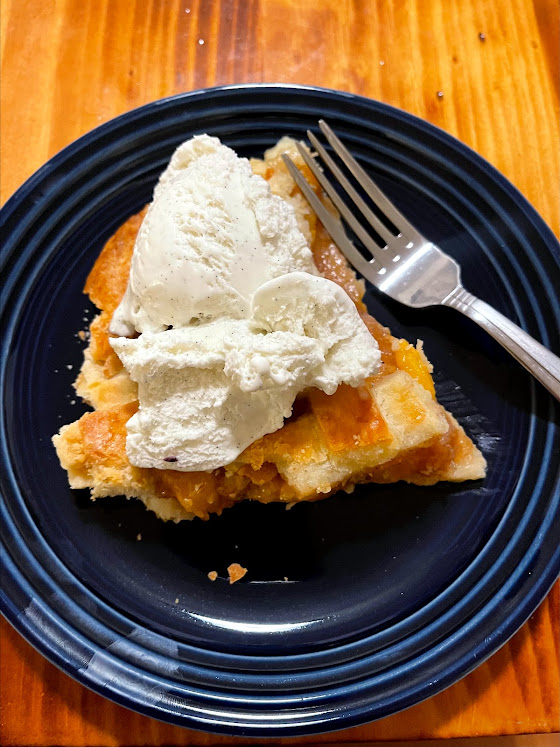
More Gluten-Free Baking Recipes
Feel like an easy quickbread? This banana bread with walnuts hits the spot.
Looking for a scones recipe? Bake a savory version with bacon, cheddar, and chives.
Want more practice for your lattice designs in pie making? Check out this gluten-free apple pie with lattice design.
Ready to take your baking skills to the next level? Try these delightful, buttery, and flaky gluten-free croissants.
Discover all the gluten-free baking recipes on the blog right here.
Here's the recipe for Gluten-Free Peach Pie!
If you love this recipe, please leave a comment! Thank you so much!
Gluten-Free Peach Pie Recipe
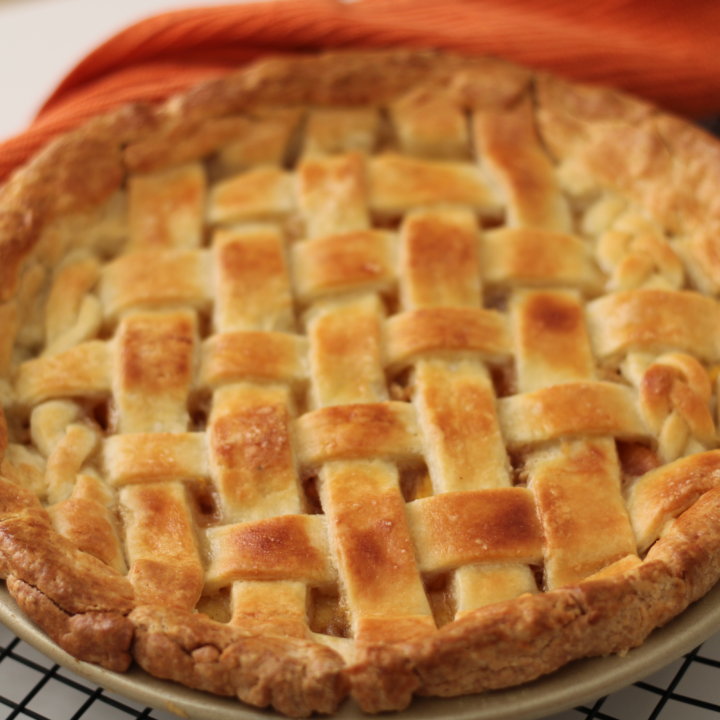
Gluten-Free Peach Pie
Recipe Adapted from Cup4Cup
Ingredients
For the gluten-free pie crust (makes 2 crusts)
- 3 cups Cup4Cup gluten-free multipurpose flour
- 2 tablespoons granulated sugar
- 1 teaspoon kosher salt
- 1 cup of cold unsalted butter, grated
- 1 large egg
- ½ cup cold buttermilk
For the peach filling
- 6-8 peaches, peeled and sliced
- 2 Tablespoons lemon juice
- ¼ cup granulated sugar
- ¼ cup brown sugar
- ½ teaspoon cinnamon
- ¼ teaspoon nutmeg
- 2 Tablespoons Cup4Cup flour
- 2 Tablespoons unsalted butter, diced small
- 1 egg, slightly beaten, mixed with 1 tablespoon water
- granulated sugar, for sprinkling
Instructions
First, prepare the peach mixture so it has time to let the spices meld with the flesh of the peaches. Combine the sliced peaches, lemon juice, granulated sugar, brown sugar, cinnamon, and nutmeg, and mix with a spoon. Make sure the peaches are coated evenly. Set aside at room temperature while you prepare the pie crust.
To prepare the pie crust, place the Cup4Cup flour, sugar, and salt in a medium bowl and whisk to combine. Then, grate the butter using a box grater (make sure it is COLD). This will allow it to incorporate better into the dry ingredients.
Add the grated butter to the mixture and combine using a fork or pastry cutter until it resembles a coarse meal. (You can also use a food processor for this part). If you used a food processor for the previous step, pour the flour/butter mixture into a large bowl to continue. Then, in a separate small bowl, whisk together the egg and buttermilk until smooth.
Make a well in the center of the flour/butter mixture (a large hole), and begin pouring in the buttermilk and egg, whisking with a fork as you add. Continue mixing until a dough begins to form, and feel free to switch from the bowl to a clean countertop to roll the dough into a smooth ball. Don't worry if it feels like the dough is too dry. Keep mixing and kneading (there is no gluten to develop). You can add an additional ¼ of buttermilk if needed. Use your hands and form the dough into a ball (there should be little to no flour bits remaining at the bottom of your bowl.) Then, wrap the dough in plastic wrap or parchment and refrigerate for at least 30 minutes.
After 30 minutes, remove the dough from the refrigerator and cut it in half. Place the second half back in the refrigerator. Allow the dough to sit at room temperature for 5-7 minutes before you start rolling, to prevent breakage. Preheat the oven to 350 degrees Fahrenheit
Dust a clean countertop with Cup4Cup flour, and roll out flat into a 12-inch circle, about ⅛-inch thick, lifting often to prevent the dough from sticking. Drape the crust over a 9-inch pie tin and fit it into the pan. Cut off any excess dough hanging over the sides of the pie tin with a sharp knife, leaving about 1 inch overhang.
Next, fill the pie. Drain the peach mixture but reserve the liquid. Mix the liquid with the gluten-free flour until thickened. Add the peaches back into the thickened liquid and pour the combined mixture into the crust and spread out evenly. Top with the butter pieces all over.
Finally, roll out the remaining half of the pie crust dough. Remove from the refrigerator and follow the same steps as before for rolling it out. If you would like to make a lattice design, cut it into 1-inch wide strips. Weave the strips into a lattice on top of the apple filling. If you are not doing a lattice design, roll the crust out like before and drape it over the top of the pie.
To seal the pie crusts together, press the bottom edge and individual lattice pieces together lightly so they stay together. Roll the edges of the excess 1 inch dough up to form a rounded edge around the pie. Using your fingers, crimp the edges together
With a lattice design, there are plenty of pockets for air to escape. If, you are choosing to do a regular pie crust topping (without the lattice), Make sure you make at least 3 slits in the crust to allow for steam. Use a sharp knife and make at least 3 holes in the dough, about 1 inch long.
Brush the pie crust all over with egg wash and sprinkle with additional granulated sugar, if desired. Place the pie on a parchment-lined baking sheet and bake in a preheated oven at 350 degrees Fahrenheit for about 1 hour, until the top is golden brown and the filling is bubbly.
Cool the pie completely on a wire rack before serving. It goes perfectly with vanilla ice cream or homemade whipped cream. Enjoy!
Notes
Preparing the Dough Early
You can prepare the pie crust dough early. Refrigerate at least 1 hour and up to 3 days in advance, or freeze for up to one month. Defrost in the refrigerator.
Let your refrigerated pie crust sit at room temperature for about 5 minutes before rolling. Let your refrigerated pie crust sit at room temperature for about 5 minutes before rolling. After the dough has rested in the refrigerator, it will be hard and crumbly. Let it sit at room temperature for about 5-7 minutes, and then if necessary, knead with your hands a few times to get a consistent, smooth dough. Remember, there's no gluten to develop, so you won't be messing anything up. Ideally, about 5-7 minutes on the counter should be a good amount of time to start maneuvering and rolling out your dough with a rolling pin. We don't want the dough too cold (this will make it break off into pieces) and we also don't want it too warm (this will make it tear and rip). We're looking for a happy medium here, and that's when the pie crust will perform beautifully, stretching and behaving just like regular pie dough!
Keep it Cold
Pie dough needs to be cold to roll out best. If you notice yours is sticking together, or getting mushy, place it back in the refrigerator to firm up for 20 minutes and try again.
Other gluten-free flour
In my experience, Cup4Cup is the best for gluten-free pies and pastries. If you use another gluten-free flour blend for this recipe, your results could vary.
Nutrition Information
Yield 8 Serving Size 1Amount Per Serving Calories 560Total Fat 28gSaturated Fat 17gTrans Fat 0gUnsaturated Fat 10gCholesterol 116mgSodium 234mgCarbohydrates 71gFiber 4gSugar 31gProtein 9g
The nutrition information on each recipe card is provided as a courtesy and for your convenience. The data is calculated by Nutritionix. You are encouraged to make your own calculations based on your ingredients and preferred nutritional facts calculator. While I try to make sure they are accurate, I cannot guarantee the accuracy of these calculations.
Do you like pie?
What's your favorite kind?
Tell me in the comments below!

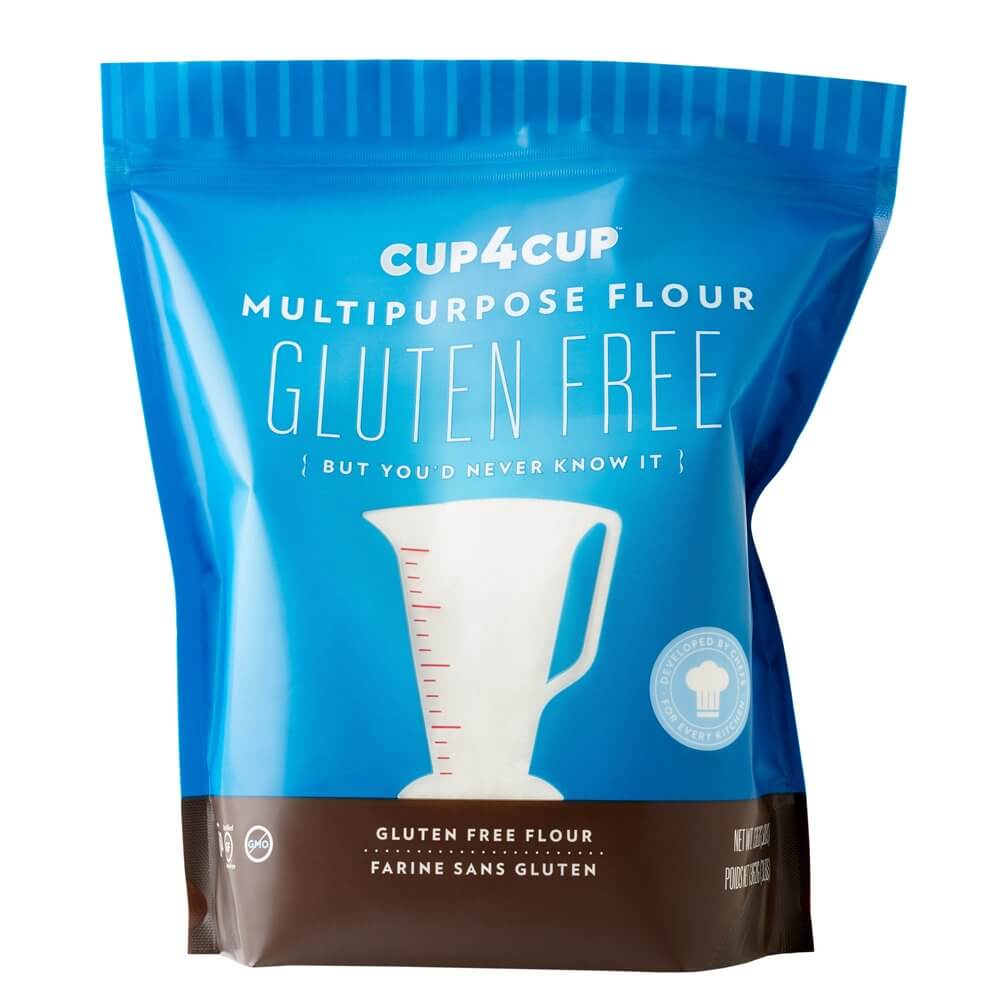
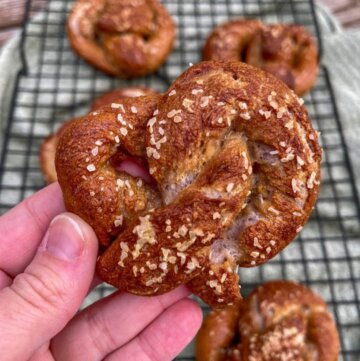

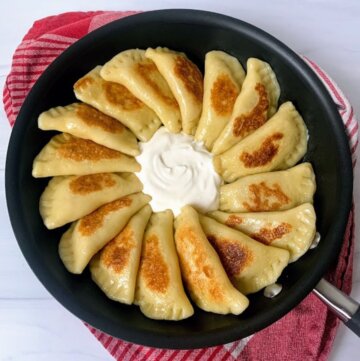
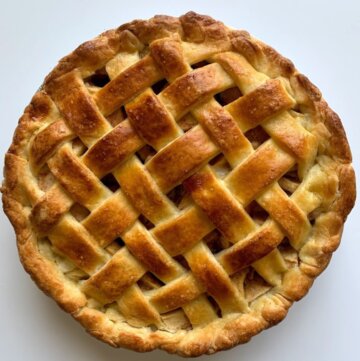
Dianne Lorincz says
Why am I unable to Pin any of your recipes?
Jennifer Fitzpatrick says
Hi Dianne, my apologies. You can pin anything you like using the Pinterest Chrome extension, which can be installed on your browser. I've been doing some website updates and reconfiguring my sharing buttons. I'll have them back again soon.
Cheryl says
I used the pie crust recipe to make my family's Pecan Pie. The pie crust turned out wonderful! It was flaky with delicious flavor and texture. The crust baked evenly to a light golden brown color and held up really well after being refrigerated. I followed the directions, using only half the stated amounts to make a single crust. I also baked my pie on a cookie sheet to make sure the bottom of the crust cooked completely, since a pecan pie has a custard-like filling. Going forward, this recipe will be my "go-to" whenever I make a pie crust!
Jennifer Fitzpatrick says
Thank you so much Cheryl for your comment! I'm so glad you enjoyed the crust and found a way to use it for your own pecan pie recipe! 🙂
Cindy says
Hi can I use frozen peaches for this recipe?. I can not find fresh peaches. If so , do I follow the recipe the same or do I need to change something thing?
Jennifer Fitzpatrick says
Hi! I've never used frozen peaches but I think they could work! I would make sure to drain the liquid first.